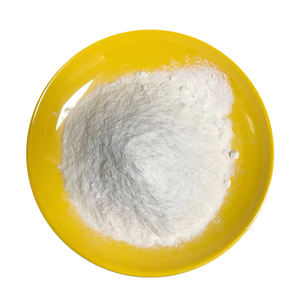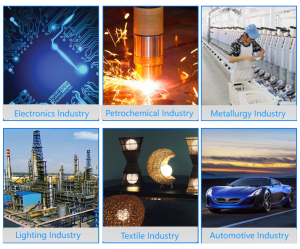Professional industry ceramic supplier, silicon nitride, silicon carbide, aluminum nitride and any other kinds of ceramics.
1. Introduction
Just 24 hours ago, a breakthrough at Oak Ridge National Laboratory made headlines: researchers successfully used a custom silicon carbide crucible to process next-generation tritium-breeding ceramic pebbles for fusion reactors. This highlights how this seemingly simple lab vessel is enabling some of the most advanced scientific endeavors on Earth.

Silicon carbide crucibles aren’t your average ceramic containers. Made from ultra-hard, high-purity silicon carbide, they withstand temperatures over 1600°C while resisting corrosion from molten metals, slags, and aggressive atmospheres. But beyond traditional foundry work, they’re quietly powering innovation in niche, high-stakes industries.
2. Aerospace: Sintering Silicon Nitride Components
In aerospace engineering, turbine blades and bearings increasingly rely on silicon nitride ceramic parts for their lightweight strength and heat resistance. To manufacture these components, raw silicon nitride powder must be sintered under extreme conditions.
Here’s where the silicon carbide crucible shines. Unlike alumina (Al2O3) or zirconia crucibles—which can react with or contaminate silicon nitride during high-temperature processing—silicon carbide offers chemical compatibility and thermal shock resistance. Factories producing silicon nitride rings, plates, or custom heat shields often specify silicon carbide crucibles to maintain material purity.
3. Nuclear Fusion Research: Containing Reactive Ceramic Fuels

Fusion energy projects like ITER and private ventures such as Commonwealth Fusion Systems require lithium-based ceramic breeder materials. These are often processed as fine powders that must be melted or sintered without contamination.
Zirconia crucibles might crack under thermal cycling, and boron nitride can degrade in oxidizing environments. Silicon carbide crucibles, however, provide a stable, non-reactive chamber—even when handling lithium orthosilicate or beryllium-containing compounds. Their robustness makes them ideal for labs developing tritium-producing pebbles, where even trace impurities can compromise reactor safety.
4. Semiconductor Crystal Growth: Beyond Quartz
High-purity silicon or gallium arsenide crystals for semiconductors demand contamination-free melting environments. While quartz crucibles are common, they soften above 1200°C and can leach oxygen into the melt.
Enter the silicon carbide crucible. Its higher melting point and lower reactivity allow for cleaner crystal growth in certain niche processes—especially when doping with elements like boron or phosphorus. Though not mainstream, specialized foundries use silicon carbide crucibles for experimental wide-bandgap semiconductor production, where purity is non-negotiable.

5. Advanced Armor Material Synthesis: Boron Carbide vs Silicon Carbide
When comparing boron carbide vs silicon carbide for body armor, both are ultra-hard ceramics—but their production differs drastically. Boron carbide is typically sintered at over 2200°C in inert atmospheres.
Standard graphite crucibles can introduce carbon impurities, while alumina reacts with boron. Silicon carbide crucibles, by contrast, remain stable and inert, making them the preferred choice for high-fidelity boron carbide ceramic plate manufacturing. This subtle advantage ensures consistent ballistic performance in military-grade armor.
6. Specialty Glass and Optical Fiber Manufacturing
The production of rare-earth-doped optical fibers or radiation-resistant glass requires melting exotic oxides like alumina-zirconia blends or lanthanum glasses. These melts are highly corrosive and can erode conventional crucibles within minutes.
Silicon carbide crucibles resist such attacks far better than silicon nitride or even mullite-based containers. Additionally, components like silicon carbide burner nozzles and silicon carbide ceramic tubes are often integrated into the same furnace systems, creating a fully compatible high-temperature environment.
7. Conclusion
From fusion reactors to fighter jet engines, the silicon carbide crucible is far more than a metal-melting pot. Its unique blend of thermal conductivity, chemical inertness, and structural integrity enables progress in fields where failure isn’t an option. As advanced ceramics like silicon nitride plates, zirconia rods, and boron carbide armor push performance boundaries, the humble silicon carbide crucible remains an unsung hero of high-tech manufacturing.
Our Website founded on October 17, 2012, is a high-tech enterprise committed to the research and development, production, processing, sales and technical services of ceramic relative materials such as 5. Our products includes but not limited to Boron Carbide Ceramic Products, Boron Nitride Ceramic Products, Silicon Carbide Ceramic Products, Silicon Nitride Ceramic Products, Zirconium Dioxide Ceramic Products, etc. If you are interested, please feel free to contact us.




